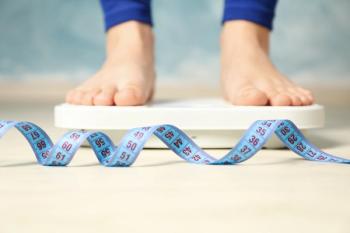
Offspring of Parents With Bipolar Disorder
It is generally held that the offspring of parents with bipolar disorder (BD) are at risk for BD. The degree of risk is an important question for both clinicians and parents. A recent study of bipolar offspring by Birmaher and colleagues1 sheds light on this issue.
It is generally held that the offspring of parents with bipolar disorder (BD) are at risk for BD. The degree of risk is an important question for both clinicians and parents. A recent study of bipolar offspring by Birmaher and colleagues1 sheds light on this issue.
These authors compared the lifetime prevalence of bipolar and other psychiatric disorders in children whose parents had–or did not have–BD. The study involved 233 parents with BD and their 388 offspring and a control group of 143 parents without BD and their 251 offspring.
Parents with BD were recruited from outpatient clinics and advertisements for participation in the study. On the basis of diagnostic interviews, 158 parents had bipolar I disorder and 75 had bipolar II disorder. The majority (80%) of the parents interviewed were female. The mean age of parents with BD was 40 years. Sixty-four percent of parents reported that the onset of their mood disorder occurred before they were 20 years old. Parents with BD were less likely to be married at the time of intake and had a slightly lower socioeconomic status than parents without BD.
The offspring of parents with BD did not have to be symptomatic to participate in the study. The mean age of these children was 12 years; 49% were female; and 88% were white. Fewer than half (42%) were living with both biological parents.
The rate of bipolar spectrum disorder in the offspring of parents with BD was 10.6% versus 0.8% in the offspring of control parents. The rate of bipolar I disorder was 2.1%; bipolar II disorder, 1.3%; and bipolar not otherwise specified (NOS), 7.2%. The rate of BD increased substantially–to 29%–when both parents had BD.
Overall, the offspring of parents with BD were at significantly greater risk (52%) for any Axis I disorder than those in the control group (29%).
The majority (76%) of these offspring experienced childhood-onset bipolar disorder before age 12 years. Bipolar NOS was the most common first episode of illness. Rates of comorbidity in these youths were high: 51% had anxiety disorder, 53% had disruptive behavior disorder, and 39% had attention-deficit/hyperactivity disorder (ADHD).
The authors concluded that there is a 14-fold increase in the rate of bipolar spectrum disorder in youths who have a biological parent with BD. If both parents have BD, then the offspring are 3 times more likely to have BD.
The mean age of youths in this study was 12 years. Prevalence rates may therefore be an underestimate because some children with depression may become bipolar in adolescence. It is recommended that clinicians who treat adults with BD inquire about the functioning of their children to provide appropriate early intervention.
Posttraumatic stress disorder and substance abuse
In a family study of BD in youths, Steinbuchel and colleagues2 investigated the relationships among adolescent BD, posttraumatic stress disorder (PTSD), and substance use disorder (SUD). Because adults with BD who were severely abused as children are at high risk for SUD, these investigators sought to determine whether there is a similar association in adolescents.
A total of 105 adolescent offspring of parents with BD and a control group of 98 youths without mood disorders participated in this study. The diagnosis of BD was based on structured psychiatric interviews. SUDs included any alcohol or drug abuse or dependence.
Rates of PTSD were significantly higher in adolescents with BD than in the control group. Sixteen percent of youths with BD had full or subthreshold PTSD compared with 3% in the control group. These youths had experienced trauma in the form of physical abuse, sexual abuse, witnessing of death, or family violence. Rates of SUDs were higher among youths with BD than in those in the control group (32% vs 4%, respectively). Alcohol was the most frequently used substance (86%) followed by marijuana (71%) and tobacco (29%).
What was the temporal order of these disorders? In half of the cases, BD preceded PTSD. In the other half of cases, PTSD was diagnosed before BD. For those youths in whom SUD developed, the majority had BD followed by PTSD and then SUD.
This study confirms an association between PTSD in adolescents with BD and subsequent development of SUD. Rates of SUD were higher in those youths who met full criteria for PTSD than for those with subthreshold symptoms. The findings reveal that BD increases the risk for PTSD, which in turn increases the risk for SUDs. The investigators suggest that treatment of adolescents with BD may prevent trauma related to the development of PTSD and subsequent SUD. It is recommended that clinicians who treat adolescents with BD evaluate for the presence of PTSD and SUD.
References:
References
1. Birmaher B, Axelson D, Monk K, et al. Lifetime psychiatric disorders in school-aged offspring of parents with bipolar disorder: the Pittsburgh Bipolar Offspring study. Arch Gen Psychiatry. 2009;66:287-296.
2. Steinbuchel PH, Wilens TE, Adamson JJ, Sgambati S. Posttraumatic stress disorder and substance use disorder in adolescent bipolar disorder. Bipolar Disord. 2009;11:198-204.
Newsletter
Receive trusted psychiatric news, expert analysis, and clinical insights — subscribe today to support your practice and your patients.

















